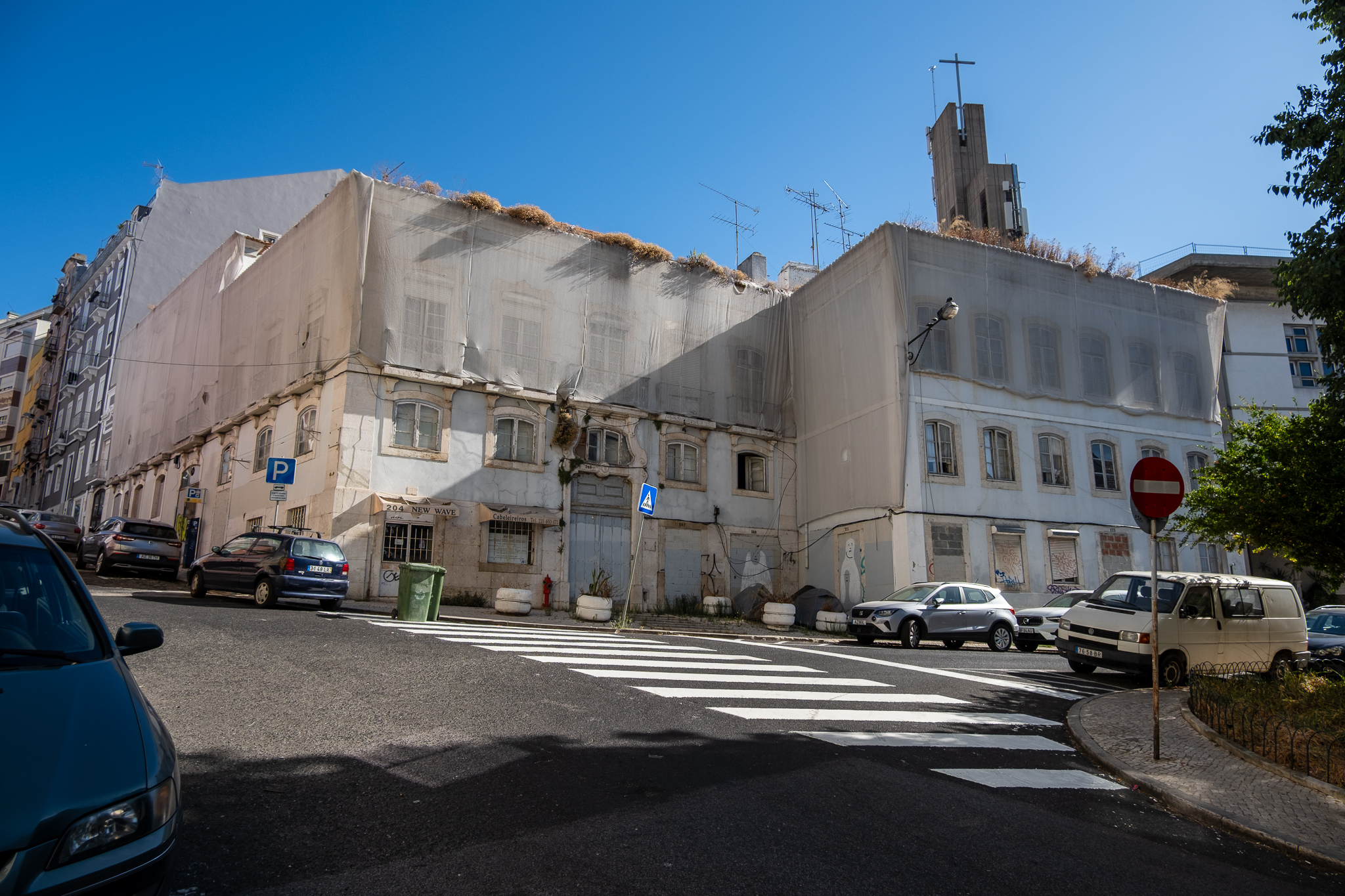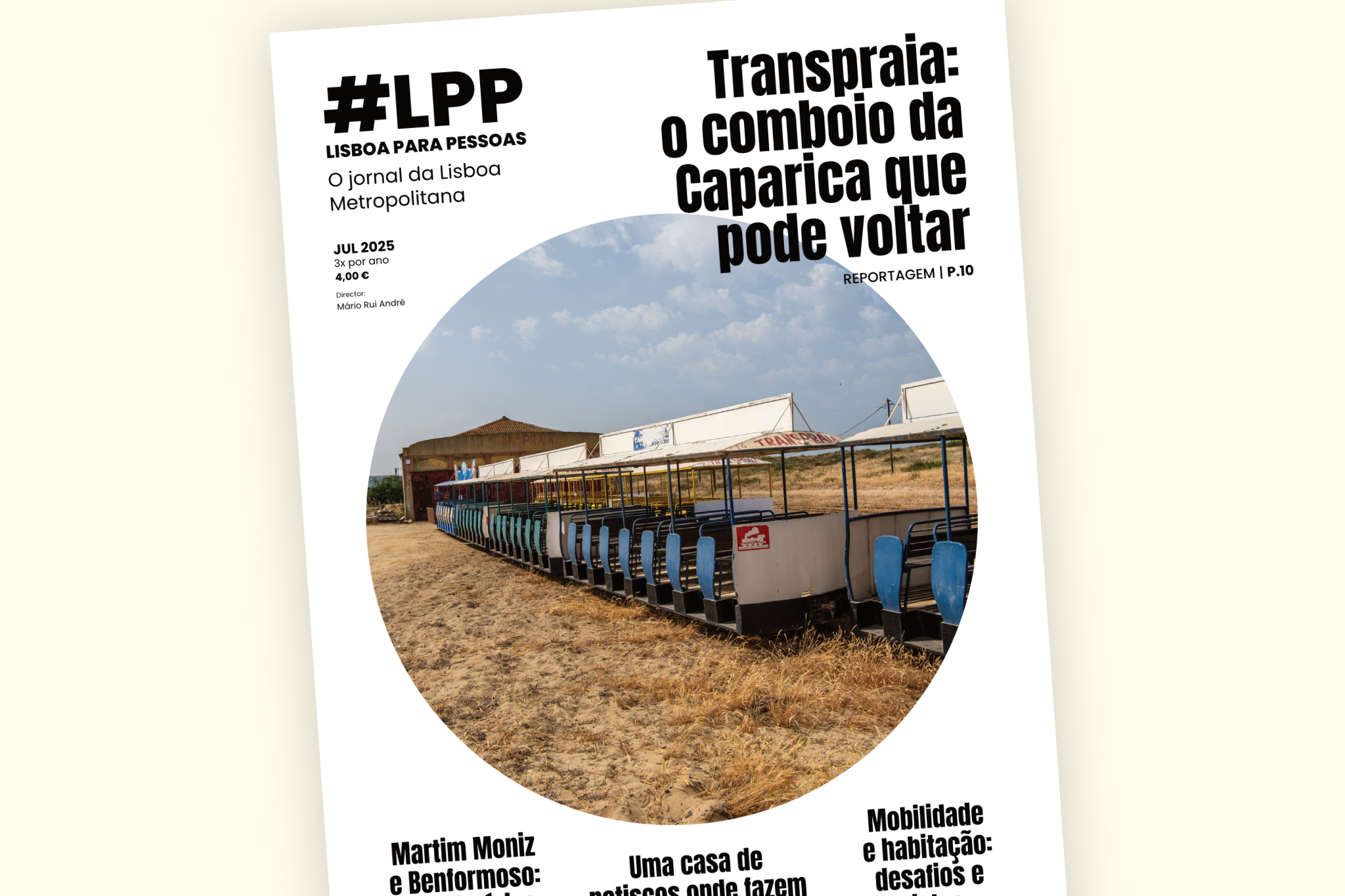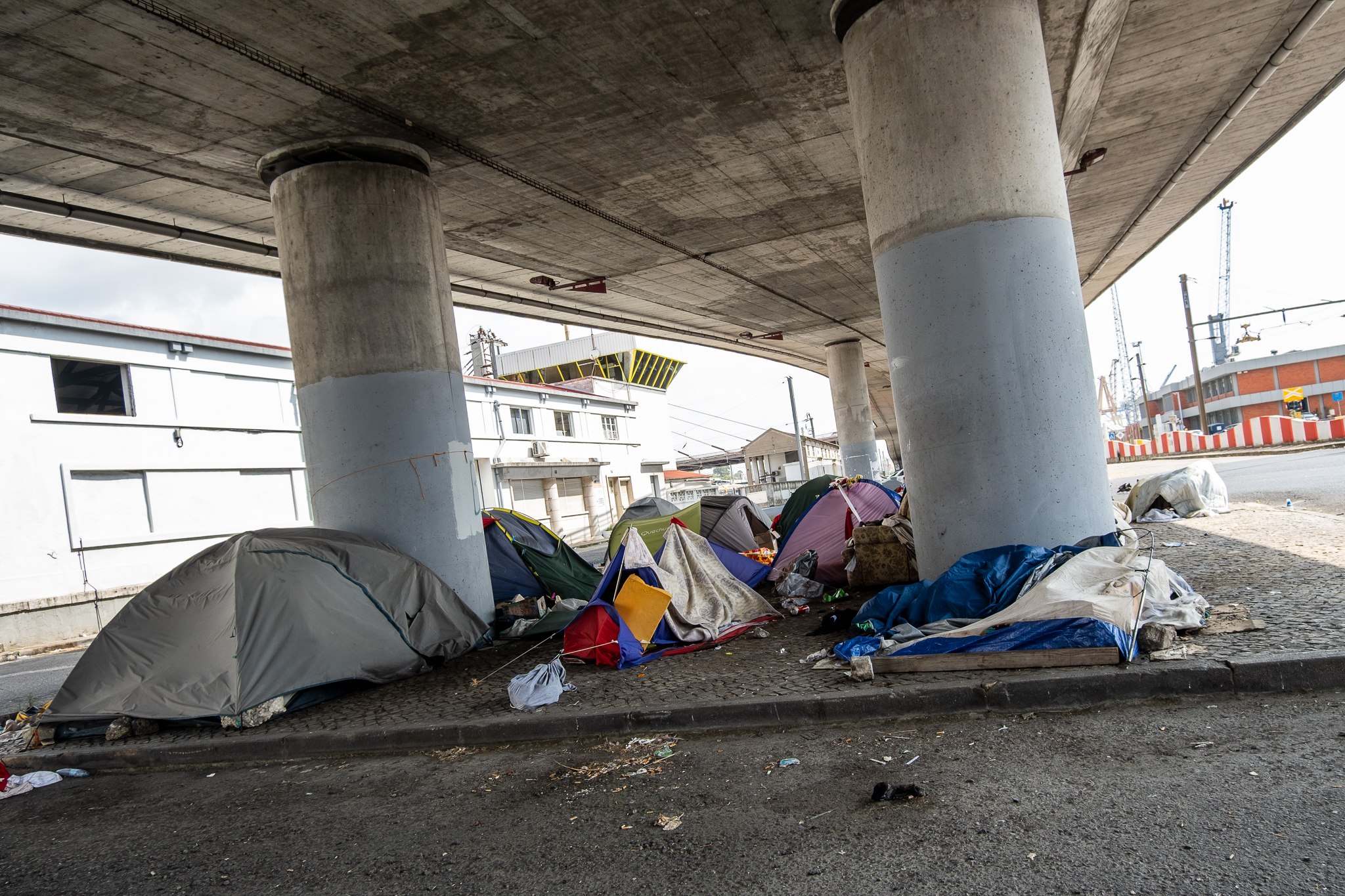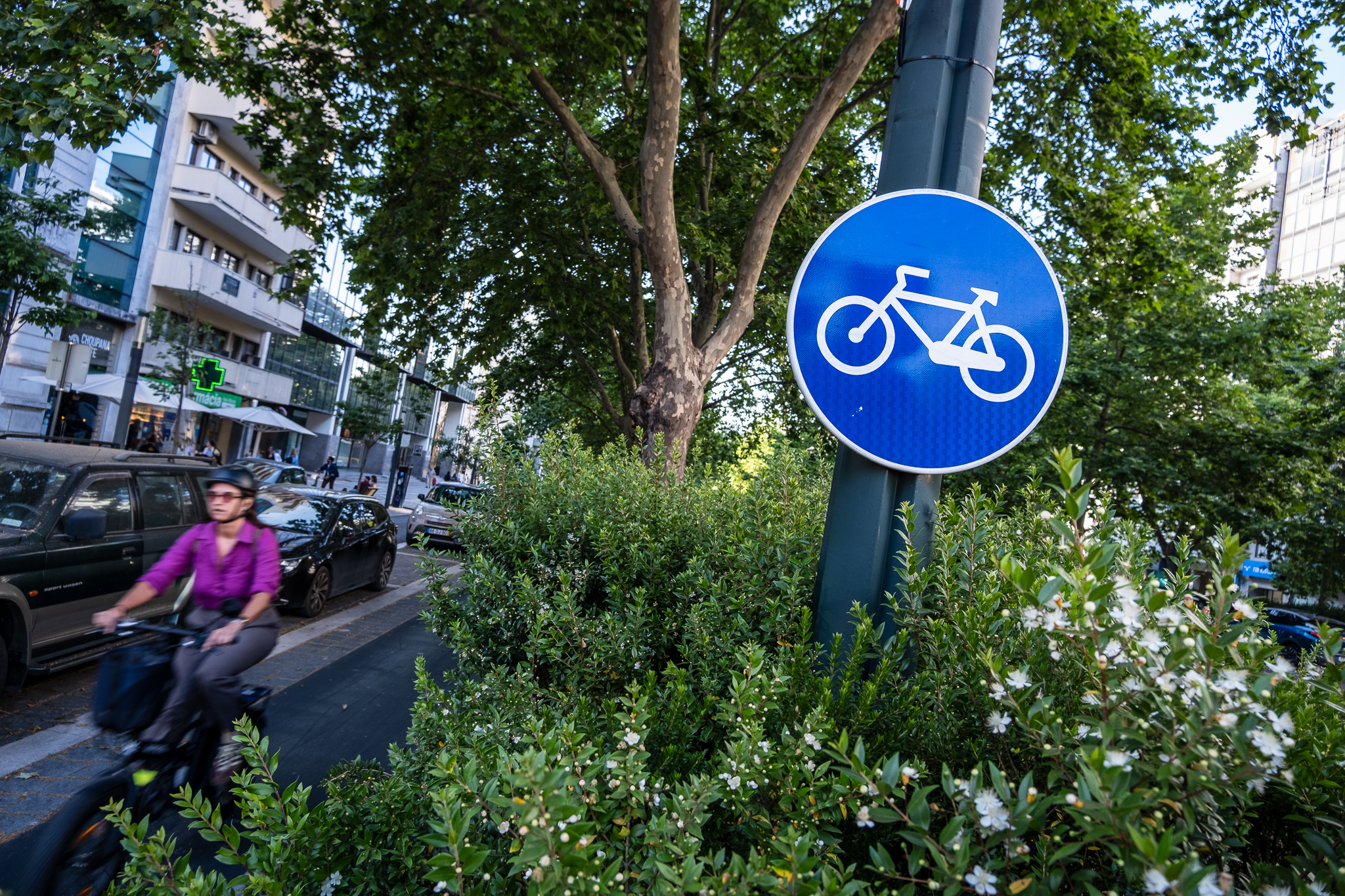In the second public session, architect and advisor João Castro, from Moedas' office, presented the executive's proposal for the Almirante Reis cycle path: a bi-directional downhill cycle path, similar to the one Medina had presented for the ZER in Baixa-Chiado.

On April 24, 2021, in an election context, Carlos Moedas had made it very clear: "if I am president, no bike lane on Almirante Reis"said in interview to Público newspaper. The candidate's position was repeated throughout the campaign, but the President's speech changedMoedas is no longer promising to remove the bike lane from Avenida Almirante Reis as he had done several times, but is now talking about studying and presenting alternatives to the population. The architect João Castro, with more than 30 years of experience in Lisbon's City Council, was put in charge of a process of requalification of Almirante Reis - two phases are on the table, one short term and one long term; but in the second public session, which took place this Wednesday at Fórum Lisboa, there was only talk of a proposal for the immediate.
At the beginning of the session, the proposal that President Moedas' office has been working on to solve the problems that João Castro says exist in the currently implemented solution was presented: a temporary bike lane on the downhill side with a bidirectional profileThe architect said that the project would be able to free up two upstream traffic lanes to clear the accumulation of automobiles that currently occurs, especially during the afternoon rush hour. "The biggest concern is to free up the uphill side of the avenue."
The proposal also includes making the downhill lane 30 km/h and the rightmost uphill lane 30 km/h. With the bike lane going downhill, Almirante Reis will become a single lane for individual and public transportation, but João Castro hopes to achieve with the new speed limit and intelligent traffic light management a constant block of traffic along the avenue.




The segregation of the proposed bike lane will be done with the current Zipper segregators, from Zicla company, but in double. With this strategy, it is intended that emergency vehicles can use the bike lane as an access corridor to the Hospital de São José, as it currently happens and that the architect Moedas said, in the last session, is working very well. The bike path should be 2.40 meters wide along its entire length.
Solves congestion
With this short-term solution, João Castro believes he will be able to solve immediate problems of air pollution, noise, and traffic flow that he says the current bike lane causes. The architect and advisor to President Moedas brought to the session data indicating that after the implementation of the first bike lane on Almirante Reis in June 2020, the average length of traffic queues increased more on that avenue than in the city as a whole (where there was a decrease in queues).
Traffic also increased in parallel streets, namely in Rua António Pedro and Rua de Arroios, but particularly in the former - António Pedro Street is a one-way parallel to Almirante Reis, which starts in the Banco de Portugal area and runs all the way to Alameda. It is said to have begun to be used by motorists to escape Almirante Reis. João Castro also took data on noise, air pollution, and the cyclist counts conducted by the Instituto Superior Técnico since May 2017 and until May 2021, which show an increase in the number of cyclists on the avenue after the implementation of the cycle track.

Discarded parallels
Advocates for direct routes and a bicycle path along Avenida Almirante Reis - which in a major upgrade could go all the way to Areeiro "to bring traffic to Gago Coutinho" and create a path where you can "be possible to avoid the automobile" -, João Castro brought to the session two solutions that had been previously studied by the Lisbon City Hall.
One of them involved a bicycle path from Martim Moniz to the intersection of Avenida Almirante Reis and Rua Pascoal de Melo, where it would continue along Rua António Pedro in a bidirectional format - a bidirectional path that would be used by the public in a bidirectional way. "some 40 parking spaces would be lost" in that street, he emphasized, "in an area with a lot of parking pressure". The other one - perhaps the first solution studied, and which even had a project designed - was involved cycle counterflows and shared lanes on both Rua de Arroios and Rua António PedroIn the Almirante Reis axis, there would only be a bike lane on Rua da Palma between Martim Moniz and the beginning/end of Rua de Arroios.


João Castro recognizes the importance of having a bike lane all along Almirante Reis and not directing the bicycle to parallel streets in the middle of the route, for example; said that this could lead to a "surprise effect" for both cyclists and motorists, who would find an avenue with different designs and configurations - some cyclists, such as those already using Almirante Reis before the bike path, would simply continue straight down the avenue when the bike lane ended instead of using the path.
At Martim Moniz, João Castro's desire is to put the cycling path to follow on the opposite side of the square from where it currently stands to create a more direct connection to the downtown area, but he admitted that "the solution in Martim Moniz depends on what we promote for downtown".The access will be more limited with a single descending traffic lane on Almirante Reis.
During the presentation at the Lisbon Forum, João Castro presented the following summary of the solution he is proposing, in advantages and disadvantages:
| Advantages | Disadvantages |
|---|---|
| It allows the reinstatement of two circulation lanes in the direction of the exit, Martim Moniz/Areeiro, promoting greater traffic flow and reduced pollution levels. | It is not a structuring, linear, symmetrical and aesthetically consistent urban solution. |
| It allows the rescue channel to access St. Joseph's Hospital, at the expense of the exceptional and integral use of the cycling channel. This is the only great advantage of the solution currently implemented. | It does not solve the left turns along the Avenue, which avoids a linear layout. |
| It maintains only one lane in the southbound direction, from the entrance of the city to the center, thus conditioning the access to downtown from excessive traffic. In the downbound direction and on the upbound right, the lane will be zone 30. | Cycling lane adapted to the existing geometry, highlighting the poor design of the Avenue, given the numerous punctual changes in recent decades. |
| Intelligent traffic signal management, allowing traffic to be driven, in block, continuously along the Avenue creating the platoon effect. | Maintenance of a superfluous, irregular central separator, with an alignment of "stunted" linden trees that have no chance to develop, compromising the quality of the entire existing canal space as an AVENUE! |
| Maintenance of all the parking lot, all the loading and unloading places. | Individual transport channel is the same as public transport in the downhill direction. |
| Fast change with reduced urban impact. No change in geometry. | |
| It only involves paint scraping, removal and location of beacons, and changing the location of recently made "kerb islands" for traffic light locations. |
A third pop-up
João Castro emphasized that the strategy of the new town hall executive is to "to offer the citizens conditions so that they can not use the automobile" - "our strategy is to offer, not to force by decree" - and that it is important not to burn any steps, nor "rush to the drawing board" of public space. Still, he recognized that the proposal that Moedas' office puts on the table is "a third pop-up"This will allow us to test the final solution. "If this setup goes well"In the end, the promised requalification of the background of Avenida Almirante Reis, about which little was said in this session, can be maintained. The architect again stated that in this phase he intends to eliminate left turns to better order and manage traffic, and to create parallel lines of movement along the avenue. He admitted that it will not be possible "greatly increase pedestrian space"but launched the idea of "during the weekend dry one side of the avenue"closing it to cars and opening it to people.
Recall that the first bicycle path on Avenida Almirante Reis was implemented in June 2020 by the then executive of Fernando Medina as part of a bicycle path program pop-upThe criticism received led to the reconfiguration of the cycling profile of the avenue in 2021 to the current design: two one-way bike paths, one in each direction, near the central corridor. The criticism received led to the reconfiguration of the cycling profile of the avenue in 2021 to the current design: two one-way streets, one in each direction, near the central corridor. At that same time, the bike path that only connected Martim Moniz to Praça do Chile was extended to Alameda, connecting there to the bike path on Avenida Guerra Junqueiro, and through Martim Moniz to the "door" of Praça da Figueira. The current solution is a third pop-up that seeks to serve as "I think fast" and that can be executed later this year, in "six, seven months", "by summer".
Is this Medina's 1st proposal?
Looking exclusively at the profile of the proposal presented, this is precisely Fernando Medina's first idea for Almirante Reis, which had been presented in January 2020 by the then mayor as part of the ZER ABC project. This same bike path ended up being executed in June of that year, not with the definitive aspect that ZER wanted, but as a temporary solution (pop-up), but instead of the downhill side that was initially planned, the bike path was implemented on the uphill side. This change was based on concerns about emergency vehicles access to São José Hospital, since initially it was not foreseen that the bicycle path on Almirante Reis - definitively or pop-up - could serve as an emergency channel.

| Cycle path pop-up of Coins | Medina's 1st bike path |
|---|---|
| Bidirectional Profile | Bidirectional Profile |
| Downhill side | Downhill side |
| In Rua da Palma and all along Avenida Almirante Reis up to Alameda, as today | On Rua da Palma and Avenida Almirante Reis until Rua Febo Moniz |
| The same Zipper segregators, from Zicla, that are in the current solution | Bollard-type Segregators |
| Possibility of the bike lane functioning as an emergency corridor | Emergency corridor in the bicycle lane not foreseen, since it would restrict traffic downtown, freeing up the road channel |
| Pop-up intervention on the current avenue, without complicated work and without touching sidewalks | Background intervention with changes in the avenue's design and a new raised floor in relation to the adjacent descending road |
The public session that took place this Wednesday, March 24th, at Fórum Lisboa was the second open to the entire population. Participants were mostly members of the city's cyclist community, reinforcing some of the positions they had already left at the previous session. Political representatives from several parties were also present, as well as people from the Lisbon City Hall itself. Besides João Castro, architect Paulo Ferreira, who designed the first tests for the new bike path, also participated in the session. Both listened to the 30 people who were able to sign up to speak. The session started at 9 pm and lasted past 1 am, but when Forum Lisbon closed for the night, the conversation continued in an informal atmosphere outside the building.
It is now hoped that the final proposal for the new bike path will be publicly presented and that these participation sessions will continue, as once the short-term issue is resolved the conversation should focus on the long-term solution.






